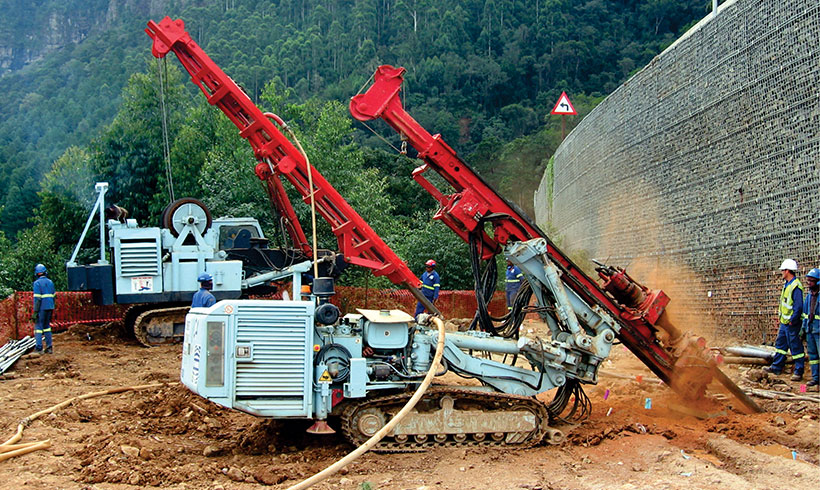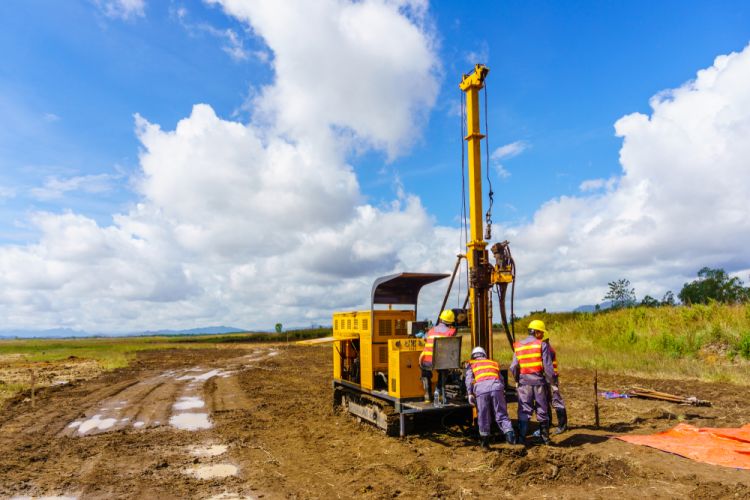The Basic Principles Of Geotechnical Engineering For Construction Projects
The Basic Principles Of Geotechnical Engineering For Construction Projects
Blog Article
All About Geotechnical Engineering For Construction Projects
Table of ContentsThe 10-Minute Rule for Geotechnical Engineering For Construction ProjectsThe Only Guide to Geotechnical Engineering For Construction ProjectsLittle Known Questions About Geotechnical Engineering For Construction Projects.Fascination About Geotechnical Engineering For Construction ProjectsSome Known Questions About Geotechnical Engineering For Construction Projects.6 Easy Facts About Geotechnical Engineering For Construction Projects Explained
These attributes need to be analyzed by geotechnical designers to anticipate their movements under different situations., making this evaluation necessary.A geotechnical engineer will certainly analyze soil to identify the bearing capacity of the planet and suggest correct foundation types, such as superficial structures, deep foundations like stacks, or specialized services like floating structures for soft soils. Comprehending the features and activities of dirt and rock, in addition to just how they communicate with buildings that have actually been erected on or within them, is just one of the key explanations for why geotechnical design is necessary.
Along with architectural preparation and construction, geotechnical design is additionally crucial to the reconstruction and maintenance of pre-existing frameworks. Age-related deterioration or added problems could impact a framework's stability and efficiency. Environmental management is accomplished with geotechnical engineering. Know-how in air, water, and dirt top quality maintenance is placed to use by geotechnical engineers to decrease the unfavorable effects of tasks.
To sum up, geotechnical engineering is a vital self-control that preserves the strength and stability of civil facilities. Geotechnical designers contribute to making building tasks efficient all over the world by understanding the practices of earth products and using appropriate preparation methods.
Little Known Questions About Geotechnical Engineering For Construction Projects.
The fundamental stability of any type of task is essential. Geotechnical engineering plays an essential function in guaranteeing that structures are improved solid ground, literally and figuratively. By taking a look at dirt, rock, and subsurface conditions, geotechnical engineers supply crucial insights that assist in the style, building and construction, and maintenance of buildings and facilities.

Getting My Geotechnical Engineering For Construction Projects To Work
Research laboratory screening: Determining the residential properties of soil and rock. A number of high-profile building and construction jobs have actually effectively made use of geotechnical design to ensure their security and security.

As a leader in geotechnical design, BECC Inc. is committed to delivering cutting-edge and efficient services that meet the greatest requirements of high quality and safety and security. For even more info on how BECC Inc. can sustain your next construction job, contact us today and allow us assist you construct on solid ground.
William Rankine, an engineer and physicist, created an alternate to Coulomb's earth stress concept. Albert Atterberg established the clay uniformity indices that are still made use of today for dirt category. In 1885, Osborne Reynolds acknowledged that shearing reasons volumetric dilation of thick materials and tightening of loose granular materials. Modern geotechnical engineering is stated to have started in 1925 with the magazine of Erdbaumechanik by Karl von Terzaghi, a mechanical designer and geologist.
The Basic Principles Of Geotechnical Engineering For Construction Projects
Terzaghi additionally created the structure for concepts of bearing capability of structures, and the concept for forecast of the price of settlement of clay layers due to loan consolidation. Later on, Maurice Biot totally created the three-dimensional dirt combination theory, extending the one-dimensional model formerly created by Terzaghi helpful hints to a lot more basic theories and presenting the collection of basic equations of Poroelasticity.
Geotechnical engineers investigate and figure out the homes of subsurface conditions and products. They likewise create matching earthworks and retaining structures, tunnels, and structure foundations, and may supervise and examine sites, which might better include site monitoring as well as the danger evaluation and reduction of natural hazards - Geotechnical Engineering for Construction Projects. Geotechnical designers and engineering geologists perform geotechnical examinations to obtain information on the physical buildings of dirt and rock underlying and beside a site to design earthworks and foundations for proposed frameworks and for the repair work of distress to earthworks and frameworks triggered by subsurface problems.
Geotechnical Engineering For Construction Projects Can Be Fun For Anyone
Geologic mapping discover this info here and interpretation of geomorphology are typically completed in assessment with a geologist or engineering geologist. Subsurface exploration normally entails in-situ screening (as an example, the conventional infiltration test and cone infiltration test). The digging of test pits and trenching (especially for finding mistakes and slide aircrafts) might likewise be utilized to discover dirt problems at deepness. , which uses a thick-walled split spoon sampler, is the most usual way to accumulate disrupted samples.

Commonly, the interface's specific geometry is unknown, and a simplified user interface geometry is presumed. Finite inclines call for three-dimensional versions to be examined, so most inclines are analyzed presuming that they are infinitely large and can be represented by two-dimensional versions.
What Does Geotechnical Engineering For Construction Projects Mean?
The observational method might be called complies with: General expedition sufficient to establish the rough nature, pattern, and residential properties of down payments. Analysis of one of the most likely problems and one of the most negative conceivable discrepancies. Developing the design based upon a functioning theory of habits prepared for under one of the most possible conditions. Option of amounts to be observed as building earnings and determining their expected worths based upon the functioning theory under one of the most negative problems.
Measurement of quantities and analysis of actual conditions. Layout modification per real conditions The observational approach is ideal for building that you could try here has currently started when an unforeseen growth takes place or when a failure or accident looms or has actually currently occurred. It is unsuitable for tasks whose style can not be changed during construction.
Report this page